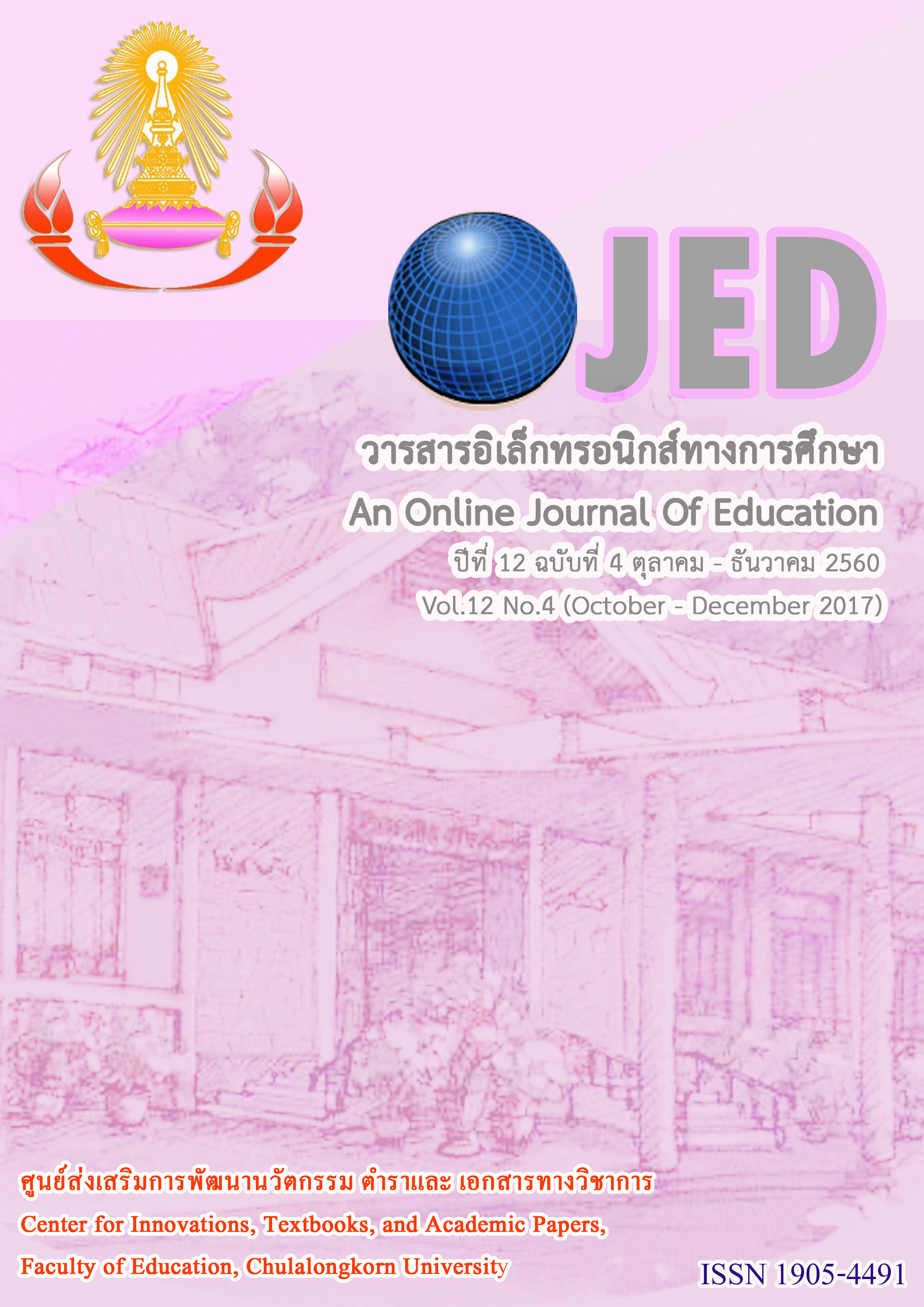การสำรวจรูปแบบการสร้างแรงจูงใจที่ครูชาวไทยผู้สอนภาษาอังกฤษเป็นภาษาต่างประเทศใช้กับนักเรียนระดับมัธยมศึกษา
Keywords:
MOTIVATING STYLES, EFL TEACHERS, SECONDARY SCHOOL LEVELSAbstract
This study aims 1) to investigate the motivating style that is commonly used among Thai EFL teacher towards students in secondary school levels and 2) to examine rationales behind teachers’ instructional behaviors associated with controlling and autonomy-supportive motivating styles. The participants of this study were 30 Thai EFL teachers in secondary schools levels in Bangkok and vicinity. The data collection was based on the information obtained from questionnaires and semi-structured interviews. The quantitative data was analyzed using descriptive statistics and t-test. The qualitative data from the semi-structured interviews was analyzed using content analysis. The results showed that the participants had a high rate of autonomy-supportive motivational usage, while the controlling motivating style was used moderately. This can be interpreted that the teachers commonly used autonomy-supportive motivating style in their classes more than controlling motivating style. The results from the interview provided a wide range of teachers’ personal rationales behind their instructional behaviors; however, time limitation was considered a major cause that enforced teachers to adopt controlling motivating style.




